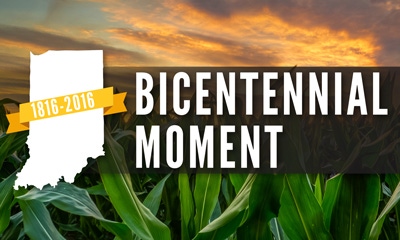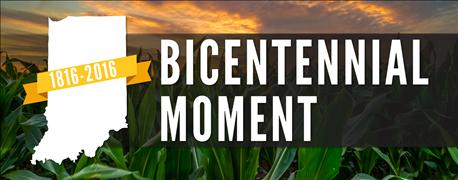
Fred Whitford had a dream. The director of Purdue University's Pesticide Programs wanted to document the accomplishments of the Cooperative Extension Service starting in the early days of the 20th century. With the help of a couple of other writers and photos contributed by county Extension offices statewide, he fulfilled his dream.

“Enriching the Hoosier Farm Family: A Photo History of Indiana’s Early County Extension Agents” is a must-have book for anyone interested in Indiana history — especially rural Indiana history, and especially in this bicentennial year. The coffee table book is authored by Whitford, along with Neal Harmeyer and David Hovde. It is published by Purdue University Press. Visit press.purdue.edu. The large, hardback edition is a bargain at the list price of $35.95. The process leading up to the book was endorsed as an official Bicentennial Legacy project.
Here are four examples of what you will find in this treasure chest of history.
1. Instruction was provided in schools.
County Extension agents, today called educators, did just that — they educated, even nearly 90 years ago. In the photo below from “Enriching the Farm Family,” Calvin Perdue, the Shelby County Extension agent in 1929, went into the Shelby Township Consolidated School to teach both boys and girls. This particular lesson was about corn judging. Whitford notes that often the lessons were timed to match up with what would be going on out in rural areas and on farms at that time of year.
By 1936, Wilbur Whitehead was county agent in Shelby County. He hung samples of soybean varieties by the roots in his office so farmers could compare them. Some were still using soybeans for hay, and some varieties were more suited to that than others.

IN-SCHOOL LESSON: Extension agents went into schools 87 years ago, and they still do today on occasion, usually when invited by a vo-ag teacher.
2. Animal selection advice was offered.
Flora in Carroll County is hardly the dairy capital of Indiana today. But at a short course training session there in 1926, Edward A. Gannon evaluated three Jersey heifers in front of a jampacked crowd. He was an associate in dairy Extension at Purdue.
The goal of events like this one, Whitford notes, was to bring scientific research out to farmers and dairy producers who wouldn’t attend college. Selecting animals wasn’t the only topic discussed. Other topics often included growing and feeding forages, taking care of young stock, and making a profit on the farm.
.jpg?width=600&auto=webp&quality=80&disable=upscale)
LESSON IN DAIRY SELECTION: The building was packed at the Carroll County short course session in 1926 when the subject was selecting the right dairy animals.
3. The soil improvement train made many stops.
The year was 1929. The Great Depression was underway. But education and the drive to improve farm life didn't stop. Purdue University Extension loaded a train with soil testing equipment, often devoted one car as a lecture car, and sometimes even hooked on cars of lime. Then the train traveled to various locations around the state.
In southern Vigo County in 1929, someone snapped this picture (below) of dozens of farmers gathered in front of the train. Whitford says agents would send out flyers in advance, encouraging farmers to bring soils to be tested, primarily to see if lime was needed.
When the train took lime cars, the lime was given free to farmers who needed it. Each farmer would get enough for an acre. The catch was they had to agree to set up demonstration plots so the county Extension agent could show other farmers the difference lime made in the field. Farmers who got the lime brought wagons, usually pulled by horses, and off-loaded lime from the rail cars with scoop shovels.

TAKE THE WORD OUT: Soil improvement trains took more than a message about improving the soil to rural areas. They brought testing labs, and sometimes even free lime, to a county.
4. On-farm demonstration of insect control was planned.
Fast-forward to 1934. The Depression and low prices aren’t the only things bugging farmers. Chinch bugs can wipe out a cornfield quickly. Extension helped develop a crude yet somewhat ingenious treatment that worked. They found a farmer willing to host other farmers to demonstrate how to make it work.
Chinch bug control was the topic of the day when dozens of farmers visited Cyril Altepeter’s farm in 1934. The technique demonstrated was forming a creosote barrier next to the corn. Chinch bugs would crawl into the barrier, get covered in creosote and fall into a trap. Corn was protected.
Some 60 years later, Benton County farmers turned to Extension for answers when the western corn rootworm broke pattern and began laying eggs in soybeans, meaning first-year corn was no longer safe from corn rootworm. The problem was first observed in Illinois, but Benton County was one of the first places it was documented in Indiana.

DIFFERENT BUG, SAME APPROACH: It wasn’t rootworms Benton County farmers worried about in 1934. It was chinch bugs. The approach was the same as it would be 60 years later — ask Extension for help.
About the Author(s)
You May Also Like




